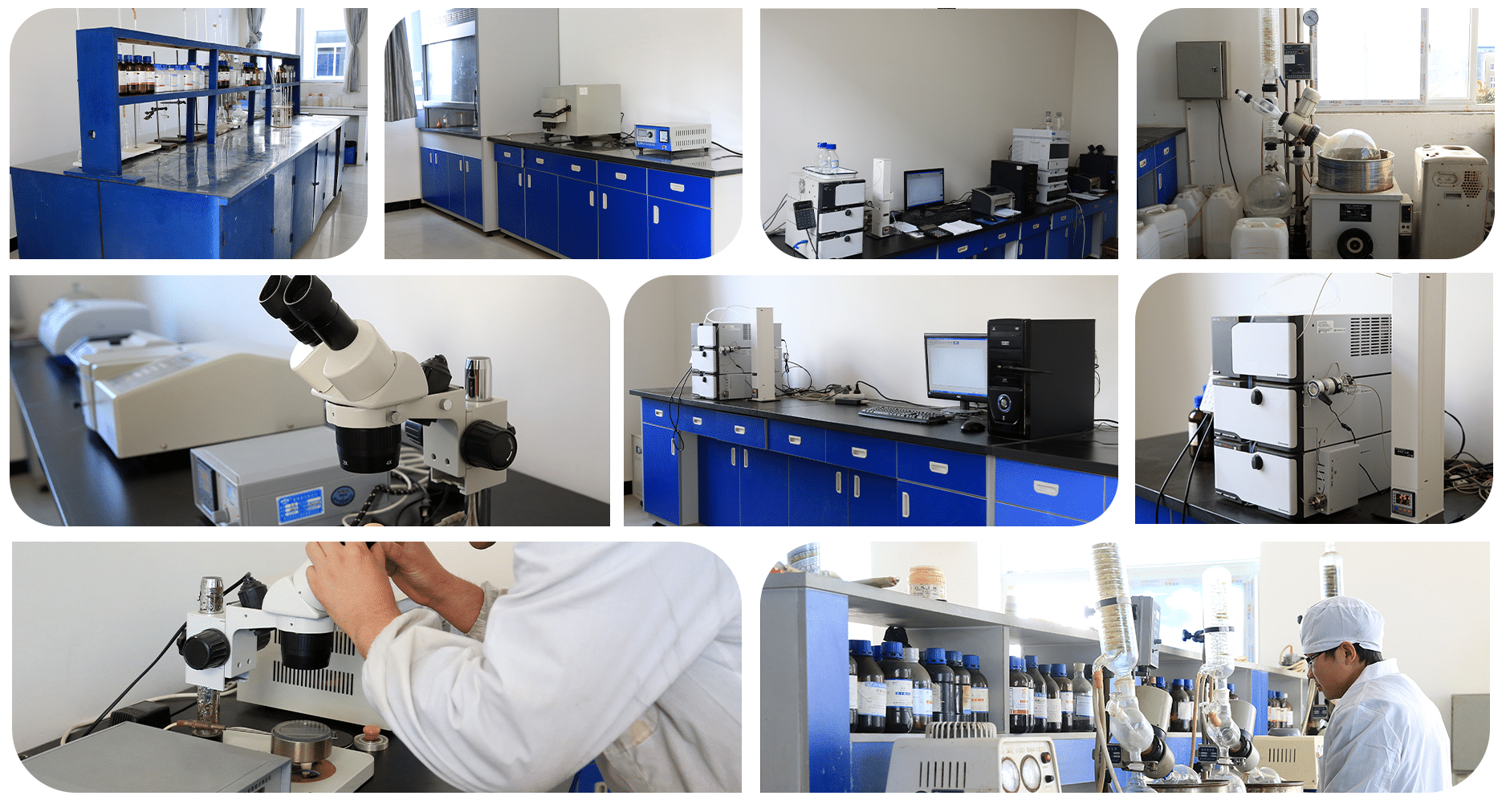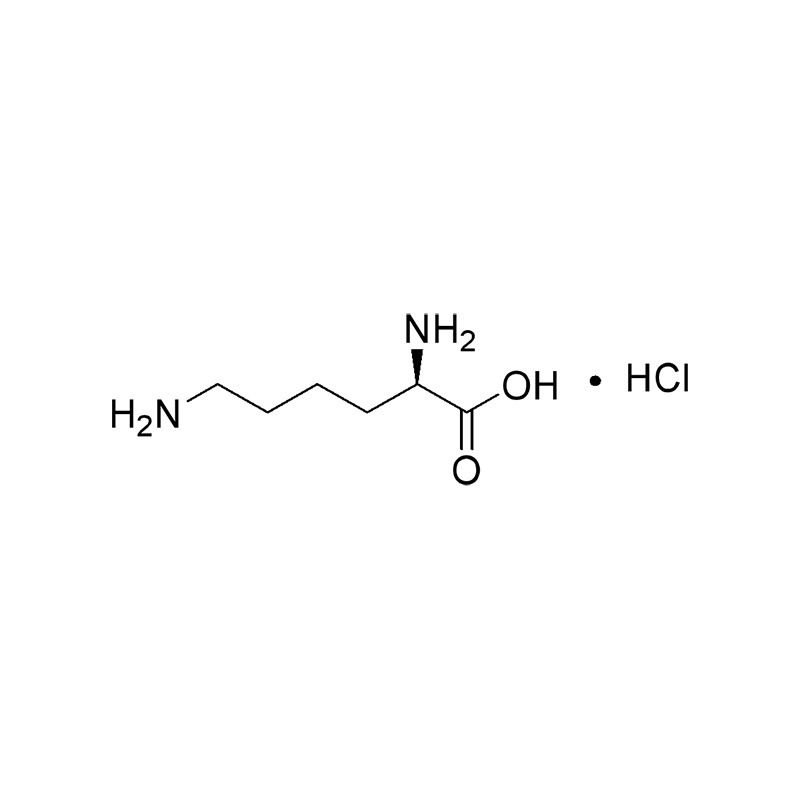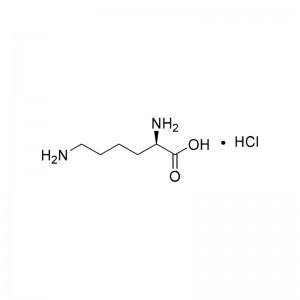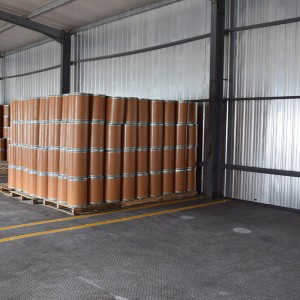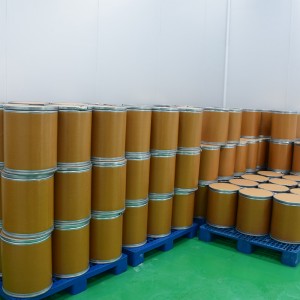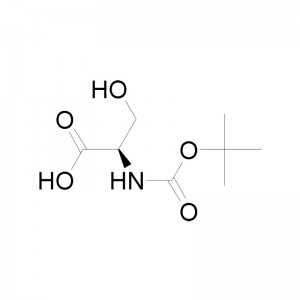
D-Lysine HCl
D-Lysine HCl
| Arsenic (As) | 1ppm max. |
| Appearance of Solution | (10% aq. soln.) clear, colorless |
| Assay Percent Range | 99+% |
| Heavy Metals (as Pb) | 10ppm max. |
| Linear Formula | H2N(CH2)4CH(NH2)COOH·HCl |
| Infrared Spectrum | Authentic |
| Iron (Fe) | 30ppm max. |
| Loss on Drying | 0.3% max. (105°C, 3 hrs) |
| Formula Weight | 182.65 |
| Specific Rotation | -20.5° to -21.5° (20°C, 589nm) (c=8, 6N HCl) |
| Physical Form | Crystalline Powder |
| Percent Purity | 99.0 to 101.0% |
| Sulfated Ash | 0.1% max. |
| Specific Rotation Condition | −21° (20°C c=8,6N HCl) |
| Color | White |
| Chemical Name or Material | D-Lysine hydrochloride |
Appearance: White to off-white powder
Purity: 99%min
Product Quality meets: Our company standards.
Stock status: Usually keep 800-1000KGs in stock.
Application: it is widely used in food additives, pharmaceutical intermediate.
Package: 25kg / barrel
Appearance and character: white powder
Melting point: 266 ° C (Dec.)
Boiling point: 311.5 ° C at 760 mmHg
Flash point: 142.2 ° C
security information
Customs Code: 2922499990
WGK Germany:3
Safety instruction: S24 / 25
RTECS No.: ol5632500
First aid measures
First aid:
1.Inhalation: if inhaled, move the patient to fresh air.
2.Skin contact: take off contaminated clothes and wash skin thoroughly with soapy water and water. If you feel unwell, see a doctor.
3.Eye clear contact: separate eyelids, wash with flowing water or normal saline. See a doctor immediately.
4.Ingestion: gargle, do not induce vomiting. See a doctor immediately.
Advice to protect the rescuer:
1.Transfer the patient to a safe place. Consult your doctor. Show this chemical safety technical manual to the doctor at the scene.
Fire protection measures editor
Fire extinguishing agent:
1.Use water mist, dry powder, foam or carbon dioxide extinguishing agent to extinguish fire.
2.Avoid using direct water to extinguish the fire. Direct water may cause the splash of flammable liquid and spread the fire.
Fire fighting precautions and protective measures:
1.Firefighters should wear air breathing apparatus and full body fire fighting clothing to put out the fire in the upwind direction.
2.Move the container from the fire site to the open area as far as possible.
3.If the container in the fire has changed color or made a sound from the safety relief device, it must be evacuated immediately.
4.Isolate the scene of the accident and prohibit irrelevant personnel from entering. Collect and treat fire water to prevent environmental pollution.
Emergency response editor
Protective measures, protective equipment and emergency disposal procedures for operators:
1.It is suggested that emergency treatment personnel should wear air breathing apparatus, anti-static clothing and rubber oil resistant gloves.
2.Do not touch or cross the leakage.
3.All equipment used in operation shall be grounded.
4.Cut off the leakage source as much as possible.
5.Eliminate all ignition sources.
6.According to the influence area of liquid flow, steam or dust diffusion, the warning area shall be delimited, and irrelevant personnel shall evacuate from crosswind and upwind to the safety area.
Environmental protection measures:
1.Take in the leakage to avoid polluting the environment. Prevent leakage from entering sewers, surface water and groundwater.
2.Storage and removal methods of leaked chemicals and disposal materials used: small amount of leakage: collect the leaked liquid in airtight container as far as possible. Absorb with sand, activated carbon or other inert materials and transfer to a safe place. Do not flush into the sewer. Large amount of leakage: build dike or dig pit to take in. Close the drain pipe. Foam is used to cover evaporation. Transfer to tank car or special collector with explosion-proof pump, recycle or transport to waste treatment site for disposal.
Operation disposal and storage editing
Operation precautions:
1.Operators should be trained and strictly abide by the operating procedures.
2.The operation and disposal should be carried out in the place with local ventilation or general ventilation facilities.
3.Avoid contact with eyes and skin, avoid inhalation of steam.
4.Keep away from fire and heat source. No smoking in the workplace.
5.Use explosion-proof ventilation system and equipment.
6.If Canning is needed, the flow rate should be controlled and the grounding device should be provided to prevent the accumulation of static electricity.
7.Avoid contact with prohibited compounds such as oxidants.
8.When carrying, it should be loaded and unloaded lightly to prevent the package and container from being damaged.
9.Empty containers may contain harmful substances.
10.Wash hands after use, and do not eat in the workplace.
11.Fire fighting equipment of corresponding variety and quantity and leakage emergency treatment equipment shall be provided.
Storage precautions:
1.Store in a cool and ventilated warehouse.
2.It should be stored separately from oxidants and edible chemicals, and avoid mixed storage.
3.Keep the container sealed.
4.Keep away from fire and heat source.
5.The warehouse must be equipped with lightning protection equipment.
6.The exhaust system shall be equipped with grounding device to conduct static electricity.
7.Explosion proof lighting and ventilation are adopted.
8.It is forbidden to use equipment and tools that are easy to produce sparks.
9.The storage area shall be equipped with leakage emergency treatment equipment and suitable storage materials.

